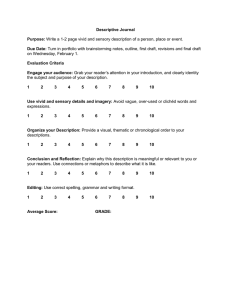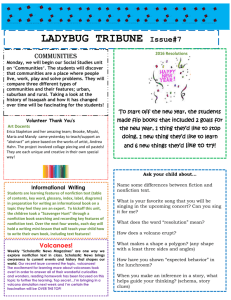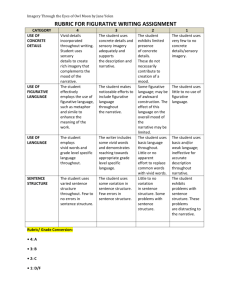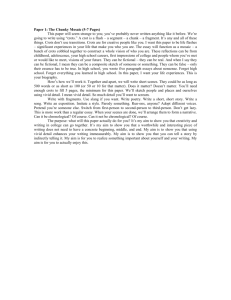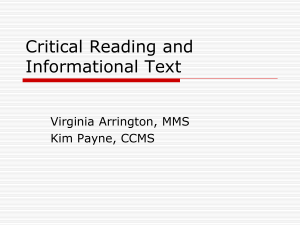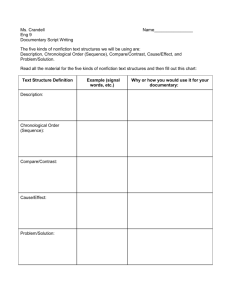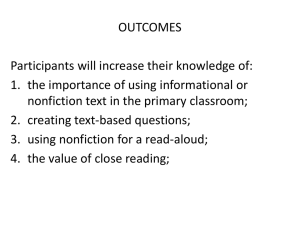Organizational Patterns Notes
advertisement
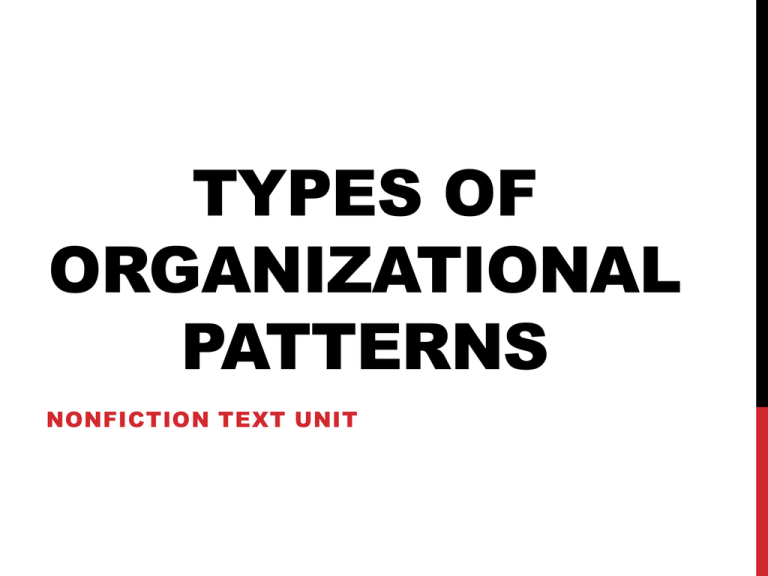
TYPES OF ORGANIZATIONAL PATTERNS NONFICTION TEXT UNIT ORGANIZATIONAL PATTERNS IN TEXT • Affect our purpose for reading • Affect the way we summarize NONFICTION TEXT Text that is true. INFORMATIONAL/EXP OSITORY Author’s Purpose may be: to inform, explain, persuade, support, describe or to identify something to the reader. CAUSE/EFFECT Cause Because of Effect this was the result • Relationship between two or more events/ things. • One brings about the other. CAUSE/EFFECT Cause Because of Effect this was the result • 1st event is the cause • 2nd event is the effect • Signal Words: • Because, since, so that, as a result of, if… then, may be due to, this led to, consequently PROBLEM/SOLUTION Problem #1 Solution Author identifies a problem and offers one or more possible solutions. PROBLEM/SOLUTION Signal Words: Problem #1 Solution • Problem, trouble, difficulty, challenge, one answer is, the question is, a solution is, one reason for the problem, plan COMPARE/CONTRAST A Different A&B Same B Different Focus on similarities and differences. COMPARE/CONTRAST A Different A&B Same B Different Signal Words: • Different from, same as, either… or, on the other hand, similar to, compared with, while, yet, as well as, both, otherwise, instead of, however, not only… but also CHRONOLOGICAL OR SEQUENTIAL ORDER 1st 2nd 3rd Often historical recordings of events/ details in time order. CHRONOLOGICAL OR SEQUENTIAL ORDER 1st 2nd 3rd Signal Words: • On (date), in (date), timeline, later, after, before, preceding, not long after, following, when, first, finally DESCRIPTION OR INFORMATIONAL Creates a mental image/ picture by using sensory words, figurative language and vivid, precise words. Signal Words: • To illustrate, sensory words (taste, sight, sound, touch, smell), figurative language and unique, precise word choice WRITE THESE NOTES AT THE BOTTOM OF THE PAGE: HOW TO: Gives information on how to do or perform something. Signal Words: • First, next, last, finally, then
